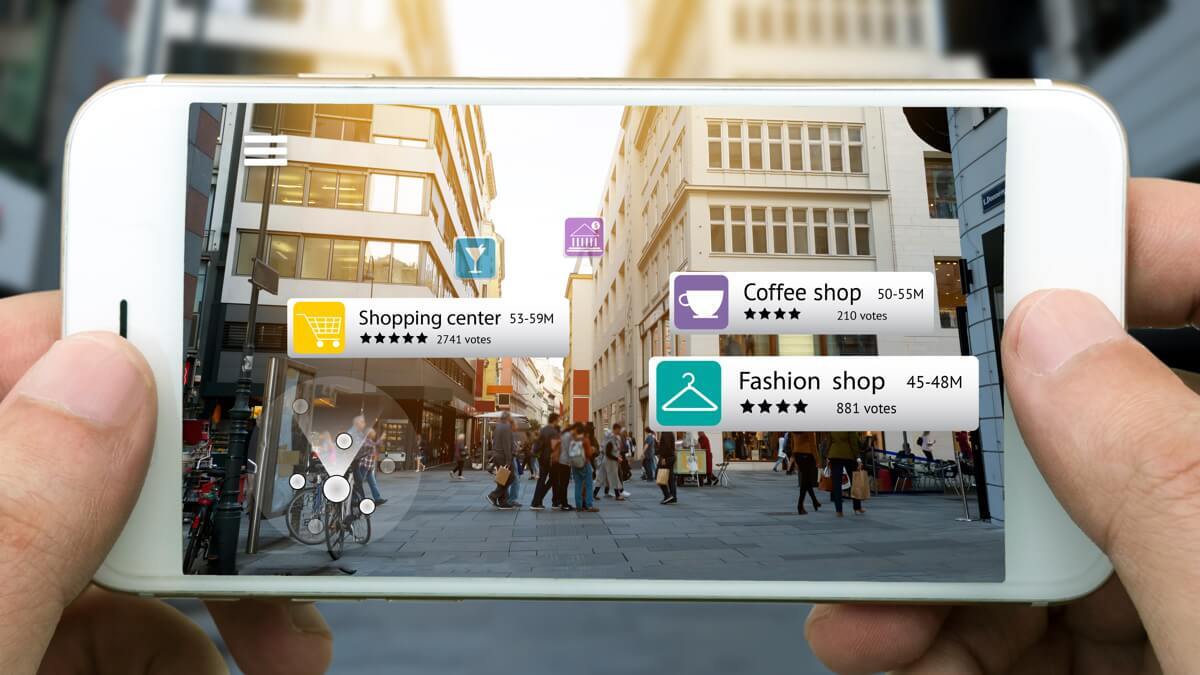Edge computing positively impacts augmented reality
Edge computing and augmented reality (AR) are two emerging technologies changing how we interact with the world. Augmented reality combines real-world views with computer-generated elements to create an interactive, immersive experience.
Although the possibilities are exciting, implementing AR can be costly and poses risks to cyber security.
On the other hand, Edge computing brings data storage and processing closer to the edge of the network, making AR more accessible, cost-effective, and secure.
In this article, we’ll explore the impact of Edge computing on augmented reality and how it’s revolutionizing the way AR is being used.
Augmented reality explained
As mentioned, augmented reality (AR) combines the real world with computer-generated elements, creating an interactive, immersive experience.
With the increasing availability of AR-enabled devices (such as smartphones), AR technology is becoming more accessible to people around the globe.
It allows users to view and interact with their surroundings in new and exciting ways. For example, AR can let one see a dinosaur landing in a park or cartoon characters mingling with real-life pets!
AR systems typically consist of several key components:
- A camera: This captures the real-world environment and feeds it into the AR system.
- A processor: Processors perform image processing on the camera’s input to identify and track features in the real world.
- A display: This component presents the digital content and information superimposed on the real-world view. This can involve a smartphone screen, a head-mounted display (HMD), or a projected image.
- Tracking and alignment: This aligns virtual content with the real-world environment. It uses various tracking techniques such as marker-based tracking, feature-based tracking, or SLAM (simultaneous localization and mapping).
- Interaction: This component enables users to interact with virtual content. This could be done through gestures, voice commands, or a handheld controller.
- Software: The software component is the backbone of the AR system. It includes the programming that makes the AR experience possible. This software can be developed using various AR Software Development Kits.
AR can be found in everyday applications, like Snapchat lenses and shopping apps, as well as in games like Pokémon Go.
Beyond entertainment, AR has a wide range of practical uses in enhanced navigation systems, sports broadcasting, interior design, and medical procedures.
For example, AR can assist in surgeries, provide real-time data for military pilots on helmet visors, and bring historical sites to life by overlaying images of ancient civilizations on ruins.
For the everyday consumer, AR has the power to make experiences more engaging, personalized, and fun by bringing them closer to users in their own environment.
What’s the difference between augmented reality and virtual reality?
Before we explore the role Edge computing plays in AR, it’s essential to differentiate AR from virtual reality (VR).
This distinction is important because AR and VR are different technologies with specific uses and applications.
The differences between AR and VR are as follows:
- AR enhances the real world by superimposing computer-generated elements, while VR creates an entirely artificial environment that replaces the real world.
- AR is interactive and allows users to view and interact with their real-world surroundings, while VR is designed to immerse users in a wholly digital environment.
- AR systems typically use a camera to capture the real world and display digital content superimposed on it. VR systems usually use head-mounted displays to fully immerse users in digital content.
- AR has found practical applications across industries like navigation, sports, retail, and medicine, while VR is primarily used for gaming and entertainment. Beyond just entertainment, VR is also being used in innovative ways, such as in home design, automobile design, and for safe training in hazardous industries such as firefighting and the military.
The key differences between AR and VR lie in their relationship between the real and digital worlds. AR enhances the real world with computer-generated elements, while VR completely replaces the real world with a digital environment.
Knowing the difference between AR and VR is crucial for understanding their potential uses and limitations and the different roles Edge computing plays for each technology.
It also helps to better understand the impacts of these technologies in different fields like gaming, education, healthcare, and many more.
How is Edge computing impacting AR?
Edge computing is revolutionizing how AR is utilized, leading to a surge in innovative applications and business opportunities.
Edge computing is a computing architecture that brings data storage and processing closer to the network’s edge, where data is generated. This computing approach significantly impacts AR, making it more accessible, cost-effective, and secure.
With Edge computing, the processing required for AR applications can run on Edge devices (such as smartphones and tablets) rather than relying on cloud computing and remote servers.
This significantly reduces cloud-based AR systems’ latency and data transmission costs.
As a result, Edge computing makes AR more accessible and improves the overall user experience. For example, AR applications run on Edge devices can respond faster to user input, making the AR experience more natural and immersive.
In addition to reducing costs and improving the user experience, Edge computing also enhances the security of AR applications.
AR applications that run at the Edge are less susceptible to the cyber threats faced by cloud-based AR applications (which are much more vulnerable to hacking and data theft). This is because Edge computing keeps data local, making it far less susceptible to attacks, as data isn’t required to travel to remote cloud servers and back.
Edge computing also provides new business opportunities for companies looking to implement AR solutions.
With the help of Edge computing, companies can now offer AR experiences that were previously restricted due to the limitations of cloud computing. For instance, Edge computing enables AR experiences in real-time, which positively impacts live sports broadcasting, translation, and product visualization.
Speaking of retail, AR applications can also be used to create interactive, engaging shopping experiences personalized to each customer.
With Edge computing, AR applications can be run on in-store devices, reducing the need for remote servers and the associated costs.
Additionally, Edge computing can be used to create AR applications for the Internet of Things (IoT), allowing companies to generate new services and products with AR-enabled IoT devices.
All in all, Edge computing significantly impacts AR, making it more accessible, cost-effective, innovative, and secure.
As Edge computing technology continues to advance and become more popular, it’s likely to have an even greater impact on the development of AR and its potential for innovation and growth.
The future of Edge computing and augmented reality
In recent years, Edge computing has become an increasingly important aspect of the technology landscape, and Edge-enabled AR is no exception.
By processing data and executing applications closer to the source, Edge computing reduces latency, improves security, and enhances the performance of AR applications.
This has opened up new possibilities for AR, enabling the technology to be integrated into numerous industries while fostering new opportunities for digital interaction.
As technology evolves, we’ll see more exciting developments in AR and Edge computing.

